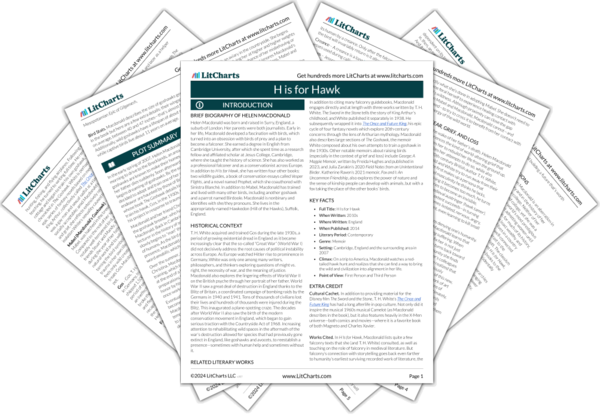Two things stand out in Macdonald’s description of the wild goshawk: the way it possesses the perfect power of wildness and the way it’s almost magically impervious to harm. In dreaming of the bird, Macdonald dreams of accessing a power that will stop her from feeling the inevitable pain of loss—something that is, of course, impossible.
